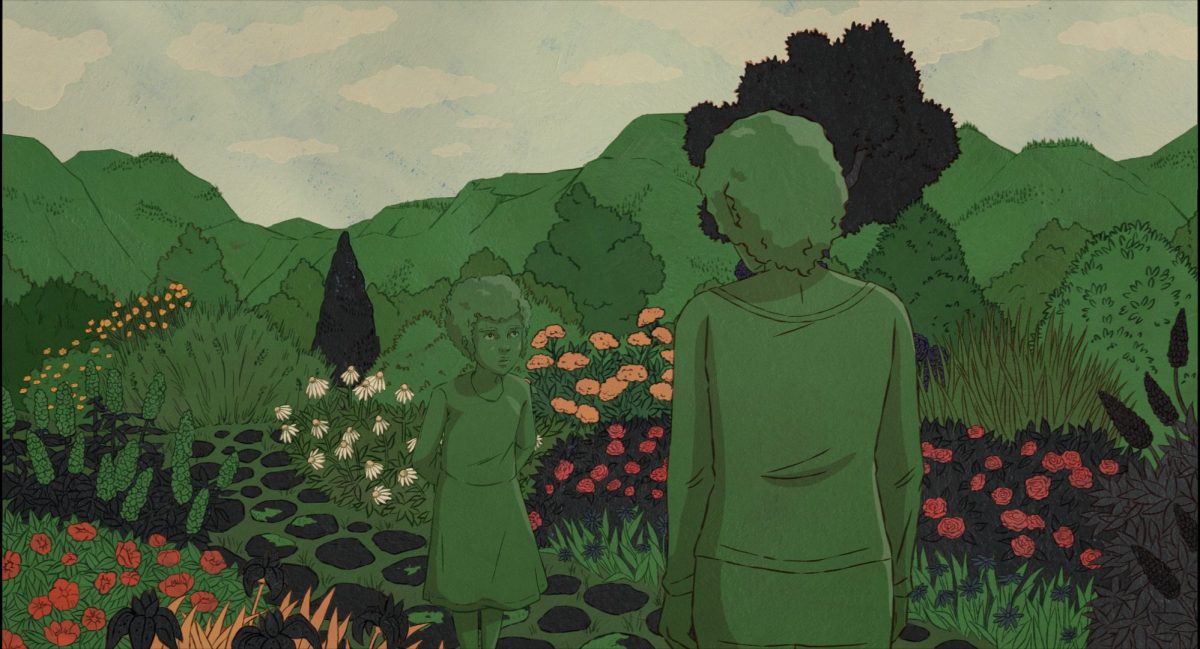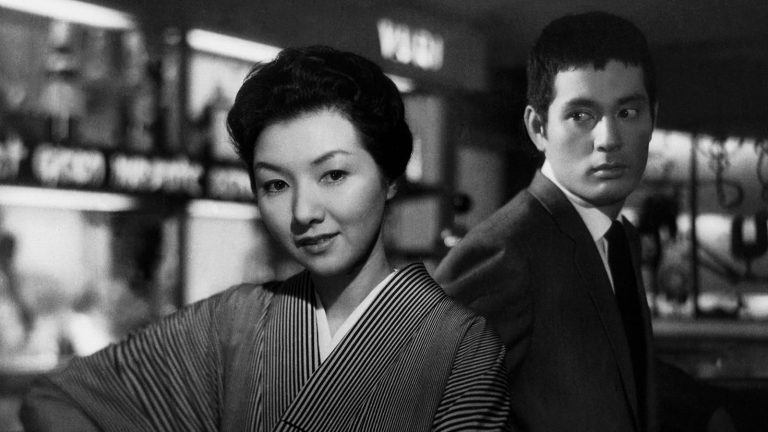Death Does Not Exist” (La mort n’existe pas, 2025), written and directed by Félix Dufour-Laperrière, revolves around a group of young activists who plan to attack a wealthy family. The film takes us right into the moment of their attack without introducing their background, their personalities, or any part of their lives whatsoever. All it reveals is that these young people have decided to take matters into their own hands by ending the lives of the local landowners. It doesn’t provide enough detail about their identity or how they came to be in this precarious situation. So, it grabs your attention in no time.
Within moments, a climactic moment suddenly changes the trajectory of their lives. The resulting bloodbath leaves Helene to be the only comrade to escape the violent attack. From then onwards, the film turns into a Satoshi Kon-esque vivid and hellish nightmare that takes us through Helene’s mind. It reveals the immediate anxieties that put her into flight mode, seeking an escape from the deep woods, into a safe space that feels like home. However, that natural instinct goes against the beliefs she holds in high regard — the same values that brought her along with her friends in front of the family’s house.
Helene feels guilty for surviving the tragedy and for freezing, just when she was expected to join others. So, while fighting a battle for survival, she fights an internal battle throughout her literal journey. It never offers her a concrete answer but makes her scrutinize every thread of personality that she believes defines her. Along the way, an accomplice haunts her just when she tries to make sense of her precarious situation. She is between death and life, unsure whether she will survive in the actual world. Even if she does, that may not relieve her from the overwhelming emotional burden of what she has left behind.
Dufour-Laperrière’s film uses its expressionistic animation style to express most of her fears and their often surreal manifestations. It appears like a deep dive into the darkest corners of her mind. There, she must confront herself to be able to face herself ever again. The animation uses only a few colors to make it appear like its own world. So, only yellows, greens, and reds appear in the valleys Helene hopes to pass through. Those limitations highlight other aspects of its 2D animation style, which still feels vivid through its lines or strokes. That choice breathes life into the emotional landscapes of Helene’s ideological rabbit hole.

There’s plenty to admire about this film and its visceral impact. It evokes a sense of urgency about the radicalization of young minds who have been increasingly in fight-or-flight situations in recent years. That is hardly surprising considering the state of the world we are in. We award films for exposing the silent complicity in war crimes and then continue being complicit ourselves. The baffling hypocrisy is bound to affect impressionable minds as they enter a world where injustices are harder to ignore. That must fuel minds as young as Helene’s. However, the film does not provide a deeper context behind the actions.
The film analyzes Helen’s choices and their consequences, especially in regard to violence. It portrays the young woman’s dwindling mental stamina as she tries to process the future in the wake of what she has partaken in. The entire film acts like an open book into her emotional terrain. The incident makes her reflect upon her actions and her convictions, or the lack thereof. However, presenting her and her comrades in an isolated landscape devoid of a comprehensive context of their situation keeps them away from making a lasting impact.
Although potent and sincere and told with a genuine concern about the state of the young generation, the film doesn’t offer a complete picture of Helene’s past and doesn’t dive much into their motivations or motives. It almost exclusively focuses on the aftermath of a rebellious act of violence. On one side, that turns into a well-intentioned cautionary tale, while on the other, it feels rather convenient ground to offer critique on the effects of violence. Even if these young people were indoctrinated to do the deed, it doesn’t offer a thorough look into who or why they did so.
There are bits of Helene recontextualizing the entire scenario and putting herself through all the turmoil to choose between life and death that are well thought-out. However, that doesn’t suffice to overcome the slightness of its script beyond its psychological undercurrent.



![Conor McGregor: Notorious [2017] – An Early Christmas Present For Fans Of The Mystic Mac](https://79468c92.delivery.rocketcdn.me/wp-content/uploads/2017/11/conor-mcgregor_-notorious-1-768x433.jpg)

![First Reformed Review [2018]: Spiritual Collapse under Crisis of Faith](https://79468c92.delivery.rocketcdn.me/wp-content/uploads/2018/08/First_Reformed_hof-768x432.jpg)
![Assassins [2020] Review – The Strange and Captivating True Story of a Political Killing](https://79468c92.delivery.rocketcdn.me/wp-content/uploads/2021/01/Assassins-2020-768x432.jpg)
![Custody [2017]: ‘TIFF’ Review](https://79468c92.delivery.rocketcdn.me/wp-content/uploads/2017/09/HIGH_ON_FILMS_TIFF_CUSTODY-768x384.jpg)